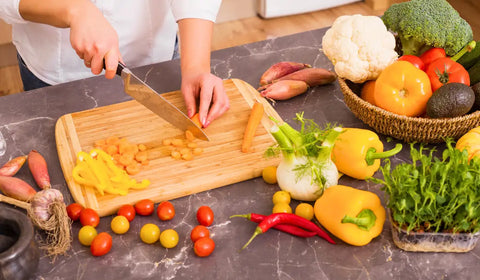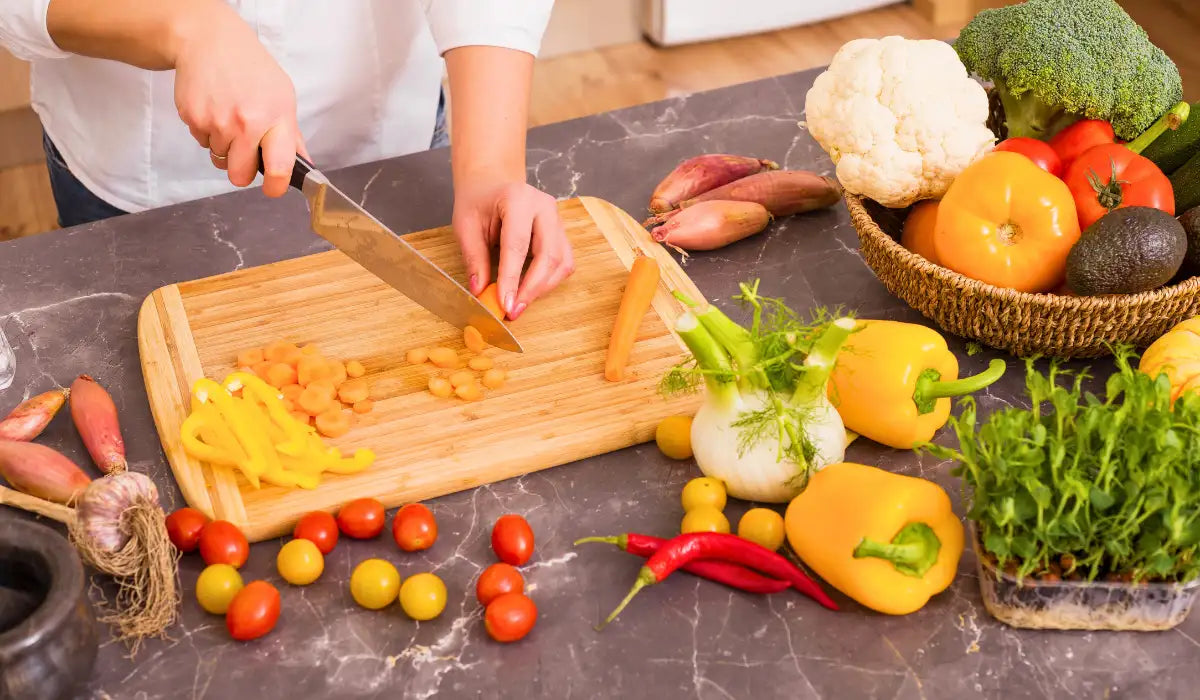How to Chop Vegetables: Mastering Knife Skills for Every Home Cook
Chopping vegetables might seem like a simple task, but mastering the technique can take your cooking skills to the next level. Whether preparing a quick salad or cooking a gourmet meal, knowing how to chop vegetables efficiently and safely is essential for every home cook. In this guide, we will dive into the art of chopping vegetables, covering everything from the right tools to precise cutting techniques.
1. The Importance of Knife Skills in Cooking
Having strong knife skills is crucial for any cook. Here’s why improving your ability to chop can heighten your culinary experience:
Precision
When you can chop vegetables accurately, you ensure that they cook evenly. This uniformity enhances the texture and flavor of your dishes. For example, diced onions will caramelize beautifully when cut into consistent sizes, adding depth to your meals.
Efficiency
Developing your knife skills reduces prep time. Instead of struggling with uneven cuts that slow you down, you’ll be able to chop quickly and confidently. This efficiency not only streamlines your cooking process but also allows you to focus more on the actual cooking.
Presentation
Well-chopped ingredients make dishes visually appealing. Imagine a salad with perfectly cubed cucumbers and sliced bell peppers. A great presentation elevates the dining experience for everyone enjoying your meal.
2. Choosing the Right Knife
The knife you use significantly impacts your chopping skills. Here are some essential types of knives for vegetable prep:
Chef's Knife
This versatile knife is perfect for most chopping tasks, ranging from slicing vegetables to chopping herbs. A good chef’s knife should feel comfortable in your hand and provide balance.
Paring Knife
Ideal for small jobs, such as peeling or trimming, a paring knife allows you to work on delicate vegetables with precision.
Serrated Knife
For soft veggies or bread, such as tomatoes or cucumbers, a serrated knife can slice without squishing the food.
3. Essential Chopping Techniques
Here are popular and effective chopping techniques every home cook should master:
Chopping Onions
To chop onions, start by cutting off the ends and peeling the skin. Then, slice the onion in half from top to bottom. Lay the halves flat on the cutting board and make horizontal cuts, followed by vertical cuts, resulting in perfectly diced onions. Remember to keep your fingers tucked in for safety.
Chopping Bell Peppers
For bell peppers, cut off the top and bottom, then slice down one side to unfold the pepper. Remove the seeds and white pith. Roll the pepper flat and slice into strips, then dice the strips as needed. This method helps achieve uniform pieces quickly.
Chopping Other Vegetables
-
Leeks: First, slice them in half lengthwise and rinse under running water to remove dirt. Next, chop into thin slices.
-
Cabbage: Cut the cabbage in half, then slice each half into strips. This technique is perfect for coleslaw or stir-fried dishes.
4. Mastering the Grip
Your grip on the knife is crucial for achieving precise cuts. Here’s how to hold your knife correctly to ensure safety and efficiency:
The Pinch Grip
Pinch the blade of the knife with your thumb and one finger, while the other fingers grip the handle. This grip provides better control and reduces wrist fatigue.
The Claw Grip
When holding the food you’re cutting, curl your fingers inward, with your knuckles facing the blade. This position protects your fingers from potential cuts.
5. Knife Safety Tips
Safety should always come first while chopping vegetables. Here are some essential tips to keep you safe in the kitchen:
Keep Your Area Clean
A clutter-free workspace will give you more room to maneuver safely while chopping. Make sure your cutting boards are stable and that the knife is clean.
Use the Right Cutting Board
Choose a sturdy, non-slip cutting board to ensure the food doesn't slide around while you're cutting. This stability is key for safe chopping.
6. Caring for Your Knives
Maintaining your knives is vital for safety and effectiveness. Here are a few tips:
Regular Sharpening
A dull knife can lead to slips and accidents. Regularly sharpen your knives to ensure they cut smoothly.
Proper Cleaning
After using your knives, wash them immediately by hand with soap and water. Avoid putting them in the dishwasher, as this can dull the blades.
Conclusion: Elevate Your Cooking with Knife Skills
Mastering the art of chopping vegetables enhances your cooking skills, making the process more efficient and enjoyable. Whether you’re dicing onions or slicing bell peppers, practice these techniques regularly to refine your abilities. Remember, the right knife enhances your efficiency and safety. With sharp knives and practiced skills, you can tackle any recipe with confidence. Ready to take your knife skills to the next level? Consider investing in a quality knife set, such as the Handmade Damascus Steel Chef's Knife Set to optimize your cooking experience.
FAQ: Common Questions About Chopping Vegetables
How do you chop onions without crying?
To minimize tears, try chilling the onion before cutting or using a sharp knife, which causes less damage to the onion’s cells.
How do you chop a leek?
Halve the leek lengthwise, rinse under running water, and slice it into thin rounds.
How do you chop cabbage efficiently?
Cut the cabbage into quarters, remove the core, and then slice into thin strips.


